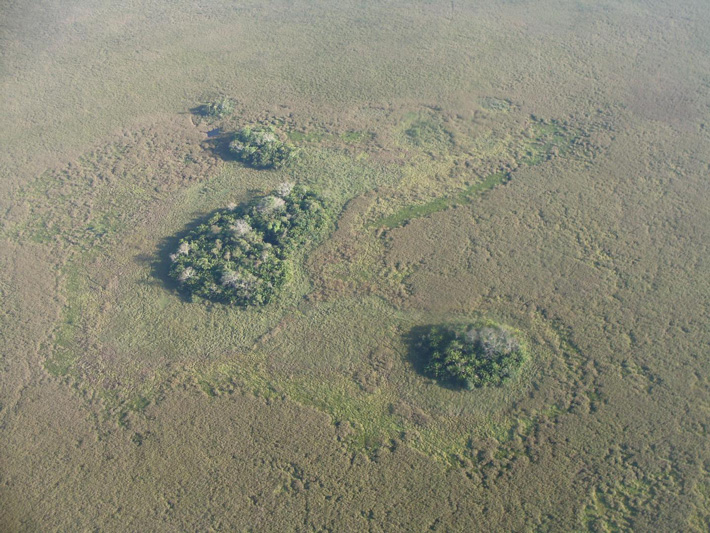Evidence of 10,000-Year-Old Crops Points to the Amazon as an Early Agricultural Hotspot
Archaeologists have identified four independent regions where humans first started growing crops: China, the Middle East, Mesoamerica, and the Andes. We can now add Southwestern Amazon to this exclusive list, due to new evidence of plant cultivation in the region.

Foods made from pumpkin and cassava, a carbohydrate-rich root vegetable, were consumed in the Amazon over 10,000 years ago, according to new research published today in Nature. That’s quite a problem, just considering that four other early agricultural hotspots previously known.
At the beginning of the Holocene, and when the last ice age disappeared from the rearview mirror of mankind, rice appeared in China, grains, and legumes in the Middle East, beans and pumpkin in Mesoamerica, and potatoes and Quinoa in the Andes. The new research, led by Umberto Lombard from the University of Bern in Switzerland, points to a fifth early agricultural hot spot: southwestern Amazon, in what is now Bolivia.
“This is a very important contribution to the archeology of the Amazon and South America,” said Jennifer Watling, a microbotanist and archaeologist from the University of São Paulo who was not involved in the new study. It has long been debated whether the first people who inhabited the humid tropics already knew how to grow plants. This study provides on-site evidence that they have done that, at least in southwest Amazon, “she told Gizmodo.
The new evidence shows that some of the first people to arrive in the Amazon quickly took advantage of the natural resources available to them. Scientists aren’t entirely sure when humans first migrated to South America, but archaeological evidence suggests it was one as long 14,600 to 15,600 years ago. That person settled in the Amazon 10,000 years ago is hardly a stretch.
The new evidence was found in Llanos de Moxos, an Amazonian savanna in northeastern Bolivia. Covering an area of 126,000 square kilometers (48,700 square miles), Llanos de Moxos is peppered with unusual features all of which potential evidence of prehistoric human activity, including elevated fields, mounds, canals, and forest islands. These ‘islands’ are small, slightly elevated areas with dense tree growth around them through plains. For the new study, Lombard and his colleagues focused on the forest islands, looking for signs of early cultivation.
Using remote sensing tools, the team brought the Surface from above and identified 6,643 individual forest islands ranging in size from 0.05 hectares to 16 hectares (0.12 to 40 hectares). Of these, 30 were examined up close, in an archaeological technique known as an earthwork. These personal investigations revealed that many of these forest islands were likely former agricultural sites.
At these locations, the scientists dug and dug up sedimentary nuclei for analysis. This allowed them to perform carbon dating but it also gave access to phytoliths – silica-based particles that form in plants. The nice thing about phytolites is that they are formed according to the specific plant species in which they were formed, allowing the researchers to identify the exact crops on these forest islands.

“Although only 30 of the 6,643 forest plots were analyzed for phytolites, this study represents one of the most comprehensive landscape-scale reconstructions of previous Amazon land use and subsistence strategies.” paleoecologist S. Yoshi Maezumi, an honorary researcher from the University of Exeter, said Gizmodo.
“The consistent presence of a variety of domesticated crops in these soil profiles supports the interpretation that the forest islands were probably landscaped and used as home gardens,” said Maezumi, who was not involved with the new research.
In particular, the researchers also found evidence of cassava called manioc, pumpkin, and early corn. The cassava was dated 10,350 years ago, the pumpkin 10,250 years ago and the corn 6,850 years ago.
These carbohydrate-rich staples were likely supplemented with large herbivores and fish in the savannas, according to the research team, including scientists from Penn State University, the University of Exeter, and Pompeu Fabra University, among other institutions.
“We already knew from genetic studies that cassava was domesticated somewhere between 8,000 and 10,000 years ago, so it’s the most surprising evidence,” said Maezumi. “The fact that humans cultivated a domesticated pumpkin species 10,000 years ago implies an even earlier period of pre-domestication cultivation, and it will be extremely interesting to know where this took place.”
Interestingly, the new study also shows that early settlers in the Southwest Amazon were not exclusively hunter-gatherers because they adopted an agricultural lifestyle.
Maezumi said there are still many unanswered questions about these early pursuits, such as the size of these groups, whether the forest islands were in fact gardens and where these people actually lived.
The new study “places the southwestern Amazon as one of the oldest domestication centers in the world,” Watling told Gizmodo. The evidence adds “to a growing body of evidence that the Southwest Amazon was a hotspot for early human habitation and provides new insights into how people lived and used diverse resources” in the forest and savanna ecosystem. The diverse landscape, she said, has likely played a key role in the process of plant domestication.
“As this region is currently under threat from deforestation and unsustainable land use, these data establish the antiquity of human land use in the area and provide an example of more than 10,000 years of indigenous land use, plant cultivation and livelihood strategies that can sustainably inform Futures from the Amazon, ”said Watling.
“As this region is currently under threat from deforestation and unsustainable land use, these data establish the antiquity of human land use in the area and provide an example of more than 10,000 years of indigenous land use, plant cultivation and livelihood strategies that can sustainably inform Futures from the Amazon, ”said Watling.
